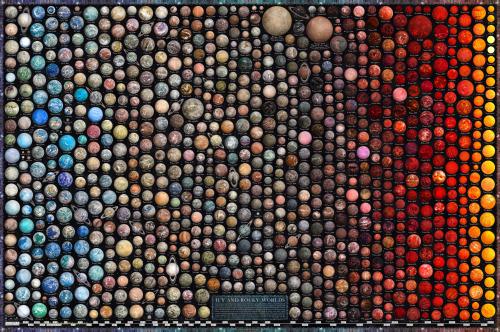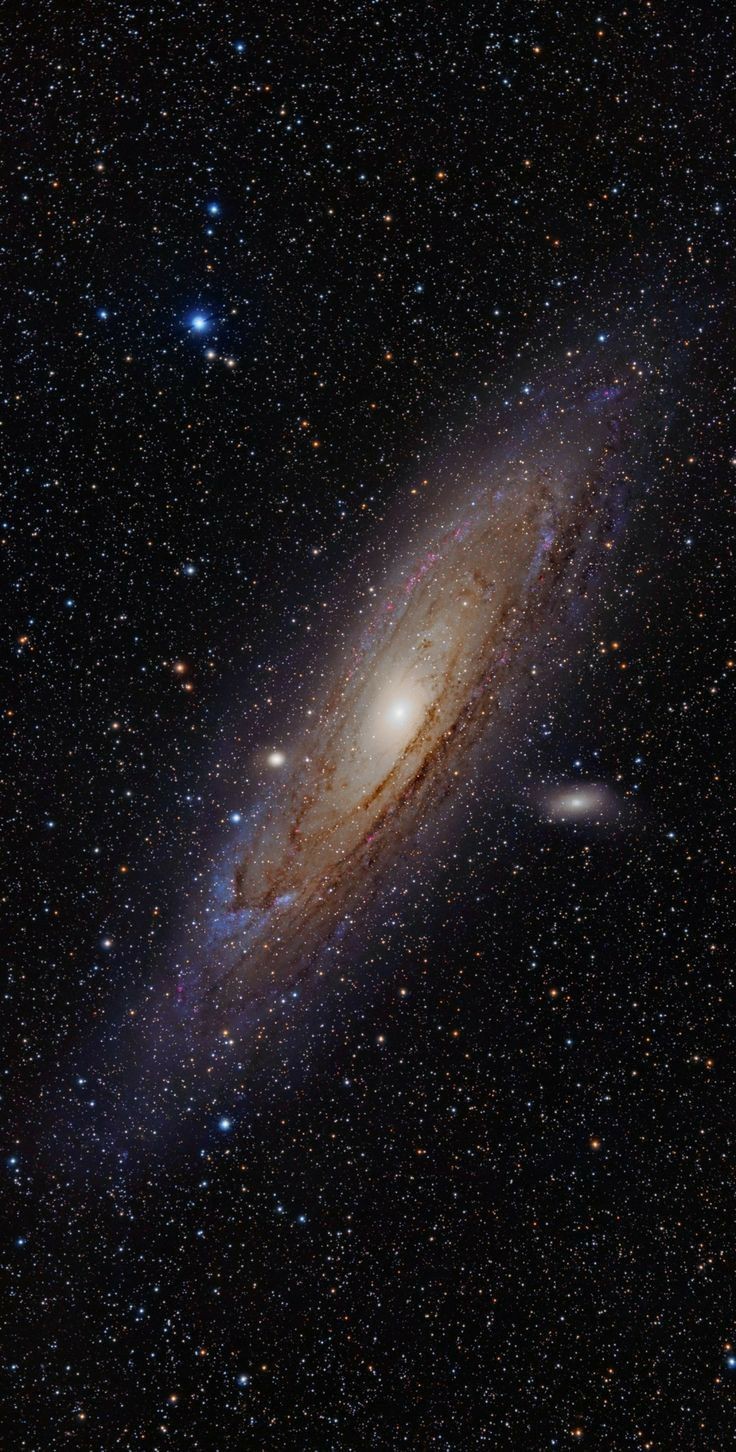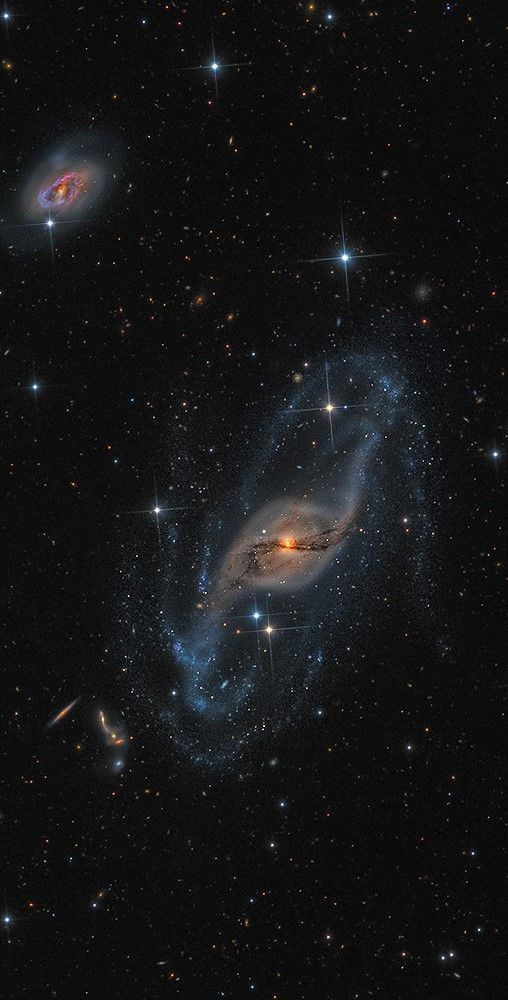With Giant Storms, Powerful Winds, Auroras, And Extreme Temperature And Pressure Conditions, Jupiter


With giant storms, powerful winds, auroras, and extreme temperature and pressure conditions, Jupiter has a lot going on. Now, NASA’s James Webb Space Telescope has captured new images of the planet. Webb’s Jupiter observations will give scientists even more clues to Jupiter’s inner life.
Credit: NASA, ESA, CSA, Jupiter ERS Team; image processing by Judy Schmidt. Read more
More Posts from Ad-astra-affecte-spe and Others

Did Betelgeuse Swallow a Binary Partner ?
The star hit the news back in late 2019 when it suddenly dimmed in an event known as the great dimming, and since there's been a lot of papers and theories to what really happened.

At the time, there was talk of supernova from a minority, while most astronomers reserved judgement on this, which turned out to be the right call, although even they had to admit bafflement at why this star suddenly become so dim.
Since, then the prevailing and mostly accepted theory is that the star ejected a huge amount of material which included carbon and thus concealed parts of the star, causing the dimming.

A new paper from Department of Physics and Astronomy at Louisiana State University has looked at another idea, that at some point in the recent past the star had consumed a binary partner.
While the study can only make suggestions at this point, some of the observed facts about Betelgeuse certainly fit the bill. The star spins very quickly for an old supersized red giant, even faster than our own sun, and the team believe a past consumption may have transferred energy to the star, accounting for this spin rate.
The next thing was that the super giant star didn't just dim, it rebounded and actually brightened considerably too. These events of material coming to the surface and briefly causing a brightening effect are predicted through models of this occurrence.
The star is not likely to go supernova anytime soon, but I would put bets on the likelihood of the star surprising us once again in the coming decades.


Over 800 terrestrial exoplanets visualized and arranged according to their equilibrium temperature and size.
chart by u/mVargic


Hey. Why isn’t the moon landing a national holiday in the US. Isn’t that fucked up? Does anyone else think that’s absurd?

A hexagonal storm with a diameter of 25,000 km raging at the north pole of Saturn.

Setting Sail to Travel Through Space: 5 Things to Know about our New Mission
Our Advanced Composite Solar Sail System will launch aboard Rocket Lab’s Electron rocket from the company’s Launch Complex 1 in Māhia, New Zealand no earlier than April 23, at 6 p.m. EDT. This mission will demonstrate the use of innovative materials and structures to deploy a next-generation solar sail from a CubeSat in low Earth orbit.
Here are five things to know about this upcoming mission:
1. Sailing on Sunshine
Solar sails use the pressure of sunlight for propulsion much like sailboats harness the wind, eliminating the need for rocket fuel after the spacecraft has launched. If all goes according to plan, this technology demonstration will help us test how the solar sail shape and design work in different orbits.

2. Small Package, Big Impact
The Advanced Composite Solar Sail System spacecraft is a CubeSat the size of a microwave, but when the package inside is fully unfurled, it will measure about 860 square feet (80 square meters) which is about the size of six parking spots. Once fully deployed, it will be the biggest, functional solar sail system – capable of controlled propulsion maneuvers – to be tested in space.

3. Second NASA Solar Sail in Space
If successful, the Advanced Composite Solar Sail System will be the second NASA solar sail to deploy in space, and not only will it be much larger, but this system will also test navigation capabilities to change the spacecraft’s orbit. This will help us gather data for future missions with even larger sails.

4. BOOM: Stronger, Lighter Booms
Just like a sailboat mast supports its cloth sails, a solar sail has support beams called booms that provide structure. The Advanced Composite Solar Sail System mission’s primary objective is to deploy a new type of boom. These booms are made from flexible polymer and carbon fiber materials that are stiffer and 75% lighter than previous boom designs. They can also be flattened and rolled like a tape measure. Two booms spanning the diagonal of the square (23 feet or about 7 meters in length) could be rolled up and fit into the palm of your hand!

5. It’s a bird...it’s a plane...it’s our solar sail!
About one to two months after launch, the Advanced Composite Solar Sail System spacecraft will deploy its booms and unfurl its solar sail. Because of its large size and reflective material, the spacecraft may be visible from Earth with the naked eye if the lighting conditions and orientation are just right!
To learn more about this mission that will inform future space travel and expand our understanding of our Sun and solar system, visit https://www.nasa.gov/mission/acs3/.
Make sure to follow us on Tumblr for your regular dose of space!

What did Hubble see on your birthday? (x)
Dec. 3, 2009 - Stellar Jewel Box NGC 3603
-
 beloved-detective liked this · 2 months ago
beloved-detective liked this · 2 months ago -
 aster650 liked this · 3 months ago
aster650 liked this · 3 months ago -
 paradisekore liked this · 4 months ago
paradisekore liked this · 4 months ago -
 paleandloitering liked this · 4 months ago
paleandloitering liked this · 4 months ago -
 herstarlight reblogged this · 4 months ago
herstarlight reblogged this · 4 months ago -
 herstarlight liked this · 4 months ago
herstarlight liked this · 4 months ago -
 alacranite reblogged this · 4 months ago
alacranite reblogged this · 4 months ago -
 dykemom reblogged this · 4 months ago
dykemom reblogged this · 4 months ago -
 0anitom0 liked this · 4 months ago
0anitom0 liked this · 4 months ago -
 daemia reblogged this · 5 months ago
daemia reblogged this · 5 months ago -
 eveeyehorizons liked this · 5 months ago
eveeyehorizons liked this · 5 months ago -
 gahl-lak-tus reblogged this · 5 months ago
gahl-lak-tus reblogged this · 5 months ago -
 havenwitchworks reblogged this · 6 months ago
havenwitchworks reblogged this · 6 months ago -
 havenwitchworks liked this · 6 months ago
havenwitchworks liked this · 6 months ago -
 mrowsters reblogged this · 6 months ago
mrowsters reblogged this · 6 months ago -
 cachorrao-do-baile69 liked this · 7 months ago
cachorrao-do-baile69 liked this · 7 months ago -
 starlightkay liked this · 7 months ago
starlightkay liked this · 7 months ago -
 tk2the reblogged this · 7 months ago
tk2the reblogged this · 7 months ago -
 tk2the liked this · 7 months ago
tk2the liked this · 7 months ago -
 pomskrp liked this · 7 months ago
pomskrp liked this · 7 months ago -
 frieza-pp reblogged this · 8 months ago
frieza-pp reblogged this · 8 months ago -
 marenatamashii liked this · 8 months ago
marenatamashii liked this · 8 months ago -
 tbistc reblogged this · 9 months ago
tbistc reblogged this · 9 months ago -
 asquared-ohgodnotthehorrors reblogged this · 9 months ago
asquared-ohgodnotthehorrors reblogged this · 9 months ago -
 asquared-ohgodnotthehorrors liked this · 9 months ago
asquared-ohgodnotthehorrors liked this · 9 months ago -
 enbyw4tt liked this · 10 months ago
enbyw4tt liked this · 10 months ago -
 ottovonklott liked this · 10 months ago
ottovonklott liked this · 10 months ago -
 eksopolitiikka reblogged this · 11 months ago
eksopolitiikka reblogged this · 11 months ago -
 gordondiana reblogged this · 11 months ago
gordondiana reblogged this · 11 months ago -
 goldenclaymore reblogged this · 11 months ago
goldenclaymore reblogged this · 11 months ago -
 amannamedcolton reblogged this · 11 months ago
amannamedcolton reblogged this · 11 months ago -
 amannamedcolton liked this · 11 months ago
amannamedcolton liked this · 11 months ago -
 thelastwinner liked this · 11 months ago
thelastwinner liked this · 11 months ago -
 mickpro reblogged this · 11 months ago
mickpro reblogged this · 11 months ago -
 trxllionaire liked this · 1 year ago
trxllionaire liked this · 1 year ago -
 exotraveler reblogged this · 1 year ago
exotraveler reblogged this · 1 year ago -
 periheliontojupiter reblogged this · 1 year ago
periheliontojupiter reblogged this · 1 year ago -
 lilianism liked this · 1 year ago
lilianism liked this · 1 year ago -
 catvulture liked this · 1 year ago
catvulture liked this · 1 year ago -
 t470n reblogged this · 1 year ago
t470n reblogged this · 1 year ago -
 14113 reblogged this · 1 year ago
14113 reblogged this · 1 year ago -
 just1095 liked this · 1 year ago
just1095 liked this · 1 year ago -
 just1095 reblogged this · 1 year ago
just1095 reblogged this · 1 year ago -
 14113 liked this · 1 year ago
14113 liked this · 1 year ago -
 itsme7147 reblogged this · 1 year ago
itsme7147 reblogged this · 1 year ago -
 paoloferrario1970 liked this · 1 year ago
paoloferrario1970 liked this · 1 year ago -
 startle reblogged this · 1 year ago
startle reblogged this · 1 year ago -
 jumpshadow liked this · 1 year ago
jumpshadow liked this · 1 year ago

★•Astronomy, Physics, and Aerospace•★ Original and Reblogged Content curated by a NASA Solar System Ambassador
204 posts




